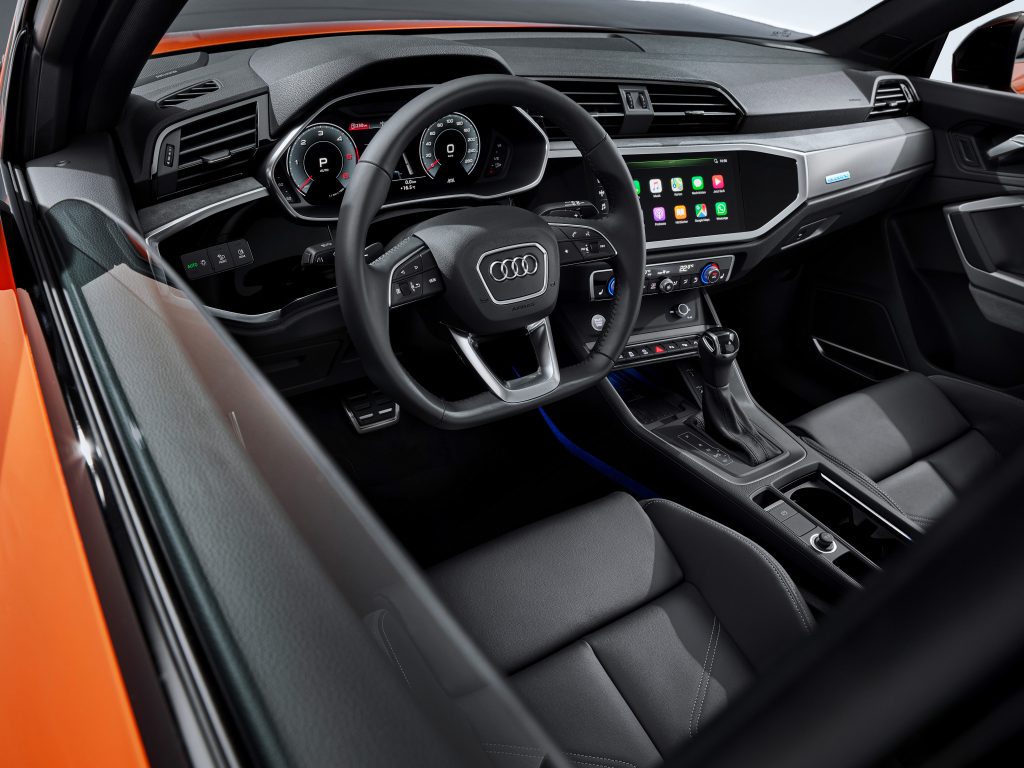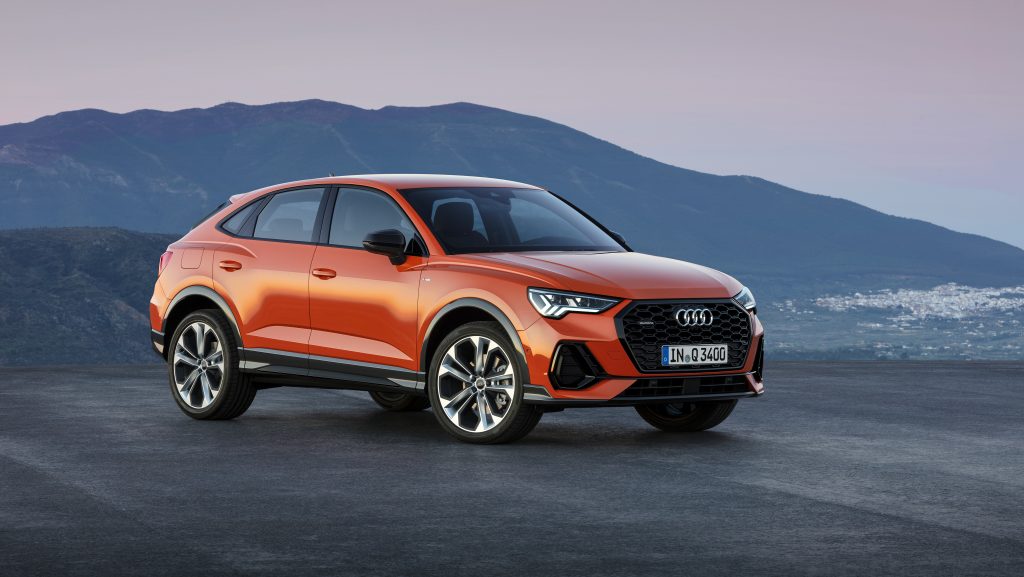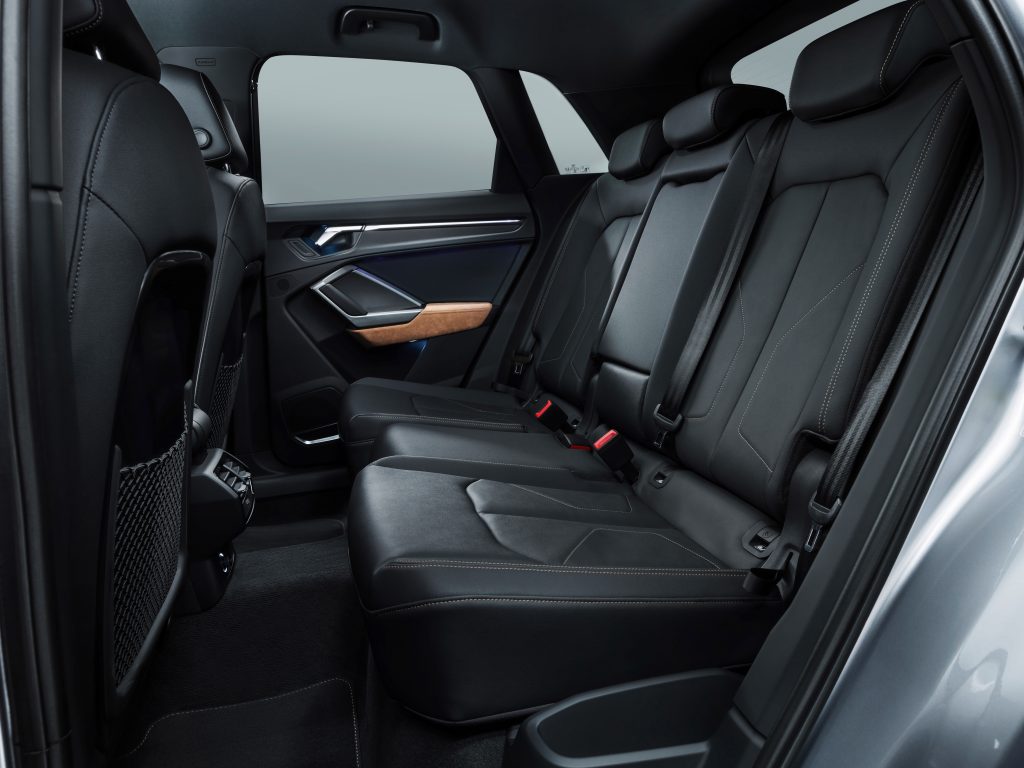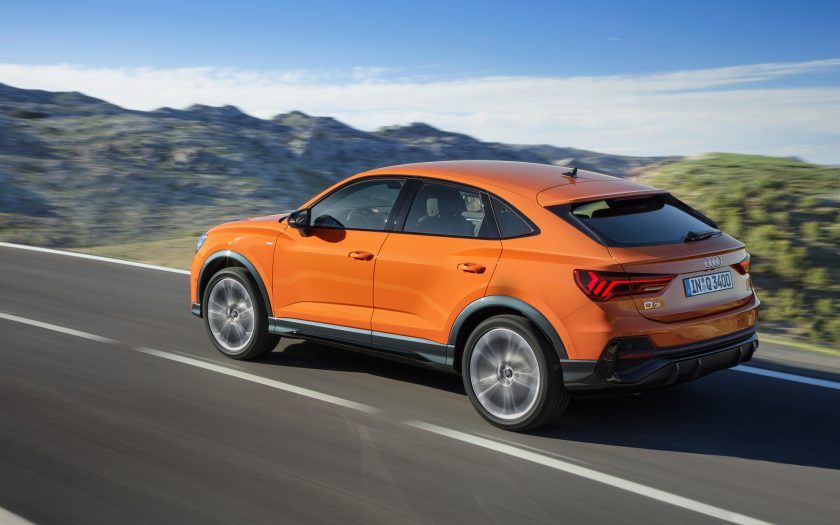THE NEW AUDI Q3 WILL ARRIVE in Australia mid-2019.
It gets sportier styling than its predecessor, drawing inspiration from Audi’s quattro DNA to make it appear wider. To emphasise the off-road look, there are colour-contrasting wheel arch trims.
The interior echos Audi’s full-size models. It features the MMI touch display with high-gloss black glass-look surround as its central element. Together with the air conditioning controls positioned underneath, it is tilted 10 degrees toward the driver with all displays, buttons and controls located ergonomically.

The new Audi Q3 has grown in virtually all dimensions measuring 4485 millimetres long, 1856 millimetres wide and 1585 millimetres high. Its wheelbase has been stretched by 77 millimetres for greater internal space and the rear seats can be moved fore/aft by 150 millimetres for improved versatility. The three-way backrests fold 40:20:40 and can be tilted in seven stages and depending on the position of the rear seats and backrests, the luggage compartment allows between 530 and 1525 litres of storage. The loading floor can also be adjusted across three levels and the parcel shelf can be stowed underneath the floor when not needed. An electric tailgate– operated with a kicking motion – is also available as an option.
In a move many will see as inevitable, analogue instruments have been consigned to history. Even the standard specification includes a digital instrument cluster with a 10.25-inch screen, operated using the multifunction steering wheel. With the top-of-the-line MMI navigation plus, the displays appear in the Audi virtual cockpit, which offers many additional functions. There is also a 10.1-inch touch display, and as an option, the driver can choose the larger Audi virtual cockpit plus with three different views, including a new, sportier display. The intuitive operating concept with its flat menu structure is supplemented by natural-language voice control which understands natural speech (so they claim – we’ll reserve judgement until we have tried it for ourselves). The dialogue manager also asks questions if necessary, allows corrections and offers choices, but defers to the speaker when interrupted.

The top-of-the-line infotainment system in the Audi Q3 offers the same technical functions as in the higher segments. Its data transfer module supports the LTE Advanced standard with integrated Wi-Fi hotspot for the passengers’ mobile devices, while the navigation system recognises the driver’s preferences based on previous journeys, allowing it to generate suitable route suggestions. The Audi connect portfolio supplements navigation guidance with traffic information online, the point-of-interest search and information on parking spaces and service stations appearing directly in the navigation map. The Audi Q3 utilises the Audi fleet’s swarm intelligence to forecast the availability of roadside parking spaces, to provide information on hazardous spots and current speed limits. Other options include Google Earth and the hybrid radio, which automatically switches between FM, DAB and the online stream to ensure optimum reception at all times. The voice control function accesses information stored in the vehicle as well as the detailed knowledge in the cloud to respond. The Audi Q3 is even more tightly integrated with the myAudi app, seamlessly connecting a smartphone to the car. The customer can, for instance, transfer navigation routes and the smartphone calendar to the MMI and locate where the Q3 is parked.
A range of hardware modules supplement the infotainment portfolio, including the Audi phone box which links the owner’s smartphone to the vehicle’s antenna and charges the phone inductively. The Audi smartphone interface links customers’ iOS and Android smart phones and places their Apple Car Play or Android Auto environment on the MMI display. The Bang & Olufsen Premium Sound System with virtual sound is also available and provides three-dimensional audio, driving a total of 15 speakers.

Adaptive cruise assist incorporates the functions of adaptive speed assist, traffic jam assist and active lane assist. Manoeuvring has been made easier thanks to the four 360-degree cameras which show the SUV’s immediate surroundings on the large infotainment screen. When reversing out of a parallel parking space, cross traffic assist is activated. The radar sensors, which the system uses to monitor the area behind the vehicle, also provide information to the standard-fit lane change warning. If the system detects a vehicle located in the blind spot or approaching quickly from the rear, a warning LED is lit in the relevant exterior mirror.
On launch, the new Q3 will be available with a choice of three petrol and one diesel power unit, plus front-wheel or all-wheel drive. All engines are four-cylinder direct injection units with turbocharging ranging in power output from 110kW to 169kW mated to a six-speed manual or seven-speed S tronic transmission. Offroad, the quattro permanent all-wheel drive delivers optimum traction and stability, while the optional hill descent control maintains the preset speed on a steep downhill gradient. The driver can vary the characteristics of the Audi Q3 depending on the driving situation or road conditions using the Audi drive select dynamic handling system. Featuring six profiles – from plush ride comfort to highly efficient, the system also influences the optional suspension with damper control.
Sensors measure the movements of all four wheels as well as the vehicle’s lateral and longitudinal acceleration and adjust the dampers as required. Alternatively, there is the sport suspension – standard with the S line exterior package – with tauter spring/damper tuning and progressive steering. Its ratio becomes increasingly direct with increasing steering angle, adding substantially to the agile handling of the new Audi Q3.
The all-new second-generation Audi Q3 is expected to arrive in Australia mid-2019. Further details including the model line-up, pricing and specification will be announced closer to launch.
